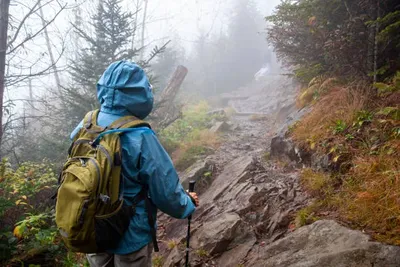Climbing Mt Kilimanjaro During the Rainy Season – Everything You Should Know
During the rainy season—April to May and again in November, Climbing Mount Kilimanjaro offers a unique experience that’s often overlooked. While it’s not the most popular time to trek due to wet conditions, it comes with benefits like fewer crowds, lush scenery, and cooler temperatures. However, the rainy season also presents challenges such as slippery trails, limited mountain views, and the need for specialized gear. This guide explains the pros and cons of rainy season climbs, the best routes for wet conditions, and how to prepare effectively.

1. When Is the Rainy Season on Mount Kilimanjaro?
Mount Kilimanjaro experiences two main rainy seasons each year:
- Long rains: Late March through May.
- Short rains: November to mid-December.
These months see more cloud cover, higher humidity, and daily rainfall, especially in the rainforest zone between 1,800 to 3,000 meters.
2. Why Some Climbers Choose the Rainy Season
Despite the challenges, some trekkers prefer this season for several reasons:
- Fewer tourists: You’ll likely have entire campsites to yourself.
- Lush landscapes: The rainforest is at its most vibrant and green.
- Lower prices: Some operators offer discounts during this off-peak season.
- Cooler temperatures: Especially appealing for those who overheat in direct sun.
3. Challenges of Rainy Season Trekking
- Muddy trails: Especially between the gate and the moorland zone.
- Wet gear and boots: Waterproof protection is essential.
- Limited summit views: Cloud cover is frequent, though clear breaks do occur.
- Greater chance of catching a cold: Damp conditions and reduced sunshine mean staying dry and warm is crucial.
4. Best Routes for Rainy Season Climbs
Some Kilimanjaro routes perform better in wet conditions due to better drainage or less vegetation. Recommended options include:
- Rongai Route: Starts on the north (Kenyan side), which is drier during rainy months.
- Marangu route: Offers hut accommodations, a huge advantage in wet weather.
Avoid Lemosho Route and Shira routes in the height of the rainy season due to thick forest and swampy sections.
5. Essential Gear for Rainy Season Climbs
Being well-equipped is critical. Here’s what you must pack:
- Full-body rain gear: Waterproof jacket and pants with sealed seams.
- Backpack rain cover: Keep your gear dry while hiking.
- Waterproof hiking boots: Mid to high cut preferred with Gore-Tex lining.
- Dry bags or ziplocks: Keep electronics and clothes safe inside your duffel.
- Extra socks: Carry more than usual to always have a dry pair.
6. Tips for a Successful Rainy Season Summit
- Leave camp early to avoid afternoon downpours.
- Keep your sleeping bag in a dry sack.
- Wear gaiters to prevent mud and water from entering boots.
- Embrace the conditions and go with a flexible attitude.
- Hire a reputable operator with quality gear and crew experience.
7. Can You Still Reach the Summit in Rainy Season?
Yes! Many climbers reach Uhuru Peak during the rainy season. The rain is heaviest in the lower zones. Above 4,000 meters, precipitation often falls as snow, creating a magical summit landscape. However, patience and determination are required to push through wet days early in the climb.
8. Who Should Avoid Rainy Season Climbs?
If you’re prone to illness in cold or damp conditions, dislike muddy trekking, or want guaranteed views at the summit, you may want to schedule your climb during the dry seasons—January to early March or late June to October.
9. Final Thoughts on Kilimanjaro Rainy Season Treks
While the rainy season isn"t ideal for every traveler, it provides a quiet, introspective, and often underrated Kilimanjaro experience. With the right gear, good mental preparation, and a flexible outlook, it can be an unforgettable adventure. If you enjoy off-the-beaten-path journeys and don’t mind getting a little wet, climbing Kilimanjaro during the rainy season may be perfect for you.
For airport transfers, Kilimanjaro trek packages, and travel planning assistance, please contact us via WhatsApp: +255 678 992 599 or email jaynevytours@gmail.com.
SEND US A MESSAGE
Our team will reply soon
RELATED PACKAGES
- Baraka Aquarium and Nungwi Village in Zanzibar
- Diving Tour in Zanzibar
- Zanzibar Sky Diving Tour
- Dolphin Snorkeling Sandbank Tour in Zanzibar
- Horse Riding Tour in Zanzibar
- Jet Ski Tour in Zanzibar
- Jozani Forest Visiting in Zanzibar
- Quad Bike Tour in Zanzibar
- Traditional Sunset Dhow Cruise Tour in Zanzibar
- The Best Stone Town Tour in Zanzibar
- Zanzibar Butterfly Tour
MORE PACKAGES
- Mount Kilimanjaro
- Ngorongoro Crater
- Serengeti National Park
- Tarangire National Park
- Lake Manyara National Park
- Zanzibar Island
- East Africa Packages
- Tanzania Safari From Zanzibar
- Kenya packages
- Rwanda Packages
- Uganda packages
- Mikumi National Park
- Kitulo National park
- Mkomazi National park
- Selous (Nyerere National Park)
